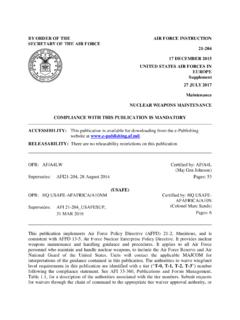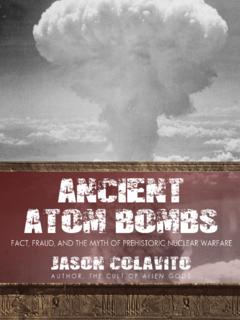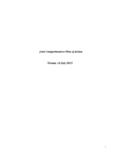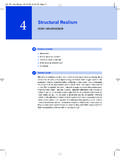Transcription of UK Nuclear History Working Paper - nuclear …
1 UK Nuclear History Working Paper Number: 1 The Real Meaning of the Words: a Pedantic Glossary of British Nuclear weapons Richard Moore 1 The real meaning of the words: a pedantic glossary of British Nuclear weapons Introduction This glossary is intended as an aid for researchers, presenting the most accurate definitions available of British Nuclear weapons codenames and nicknames. It is carefully bas ed on public-domain information (only), in particular documents in the UK National Archives (formerly PRO) at Kew.
2 It has been discussed by the Southampton University seminar group on British Nuclear weapons History and incorporates comments, for which I am extremely grateful, from group members and from Brian Burnell. Copyright remains with Richard Moore but researchers are welcome to quote from the glossary with suitable acknowledgement. Several types of codenames have been used for British Nuclear weapons . The well known rainbow names of the form (colour + noun) were assigned to weapons and equipment projects, Nuclear and non- Nuclear , by the Ministry of Supply (MoS).
3 The names must have been random in theory, but an element of choice is apparent in their allocation (see , Violet Mist for an example where more than one choice of codename was available). Some rainbow names were unofficial coinages: a non- Nuclear example was Blue Yeoman, a radar incorporating elements of the earlier Blue Riband and Orange Yeoman projects. Some were haphazard word pairs ( , Indigo Hammer) but others more obviously matched ( , Blue Danube, Red Duster) and in one or two cases ( , Yellow Sun for a bomb based on thermonuclear fusion) coincidence in allocation seems unlikely.
4 This system was replaced in 1959 in the new Ministry of Aviation (MoA) with a more anodyne digraph/trinome system (letter/letter/number/number/number). The Admiralty and Ministry of Defence (MoD) also allocated codenames according to their own systems, and the Atomic weapons Research Establishment (AWRE) at Aldermaston often used its own nicknames for warheads and warhead-related items; weapon designers were able to exercise their own discretion (and occasionally wit) in this regard, and some relationships between designs are apparent as a result (see , Granite-type).
5 AWRE often used personal names as warhead nicknames. The glossary is currently fuller for the period up to 1973 for which declassified documents are available. Version control< /p> June 2003 First draft Sept 2003 Revised after comments 2 Dec 2003 Revised for publication after further comments Mar 2004 Final revision for publication Mar 2004 Revised for MCIS website after further research and comments 3 Antelope: an American Polaris improvement study, combining elements of previous ideas/projects known as Exo-PAC, Mark-up, HEXO and Topsy.
6 Included screening for electronics, a hardened sock for the missile re-entry body and replacement of one warhead with a decoy system. Missile with Antelope was referred to as Polaris A-3A. Trialled during 1966-68 but did not enter service. UK Super Antelope was its conceptual successor. (American codename). Antler: test series at Maralinga in Sep-Oct 1957. Originally known as Sapphire, then Volcano. (Official MoD operation codename?). Artificer: security codeword covering information on Polaris improvement (see Chevaline).
7 Atomic: security codeword covering Nuclear weapons information. Bloodhound: surface-to-air guided weapon produced by Bristol Aircraft and Ferranti, originally against a War Office requirement, later against a number of Air Ministry requirements for the RAF. MoS codename was Red Duster. Suggestion of a Nuclear warhead was made as early as 1955; Indigo Hammer and Pixie were both considered. Decision taken in 1958 that only a new command-guidance version of Bloodhound, to meet Air Ministry requirement , would have a Nuclear warhead.
8 The warhead requirement , also of 1958, would have been met by Indigo Hammer or later Tony (in RO106). The Nuclear command-guidance weapon was cancelled in 1961 but conventional versions of Bloodhound saw many years service with the RAF. (Manufacturer s trade name). Blue Boar: TV-guided bomb designed by Vickers-Armstrong to meet Air Ministry requirement of 1947 (later of 1949). There were suggestions that a Nuclear warhead, presumably either the Blue Danube or Red Beard warhead, would be required.
9 The weapon was cancelled in 1954. (Official MoS rainbow codename). Blue Bunny: see Blue Peacock. Blue Cat: warhead relating to US , mentioned in one or two documents from the end of 1958. May have been an earlier name for Tony. (Official MoS rainbow codename?). Blue Danube: the first in-service British atomic bomb, produced in response to Air Ministry requirement , issued Aug 1946 (2nd issue Aug 1948; 3rd issue by 1955). Used an all-plutonium implosion warhead similar but not identical to that tested in 1952 in the Montebello Islands.
10 Weight around 10,000lb, length around 290in, diameter 62in. 10kt yield agreed by Chiefs February 1953 to conserve fissile material stocks; greater yield was required and consideration given to a mixed and boosted version of 30kt or higher, but the eventual service version had nominal 16kt yield. Delivered to the RAF beginning in Novemb er 1953; in-service capability from July 1955 but only given CA approval in 1957. Existed in two versions: Blue Danube with ground loading of the fissile core, and Blue Danube with in-flight loading; there were various other detailed differences and mods between weapons .






